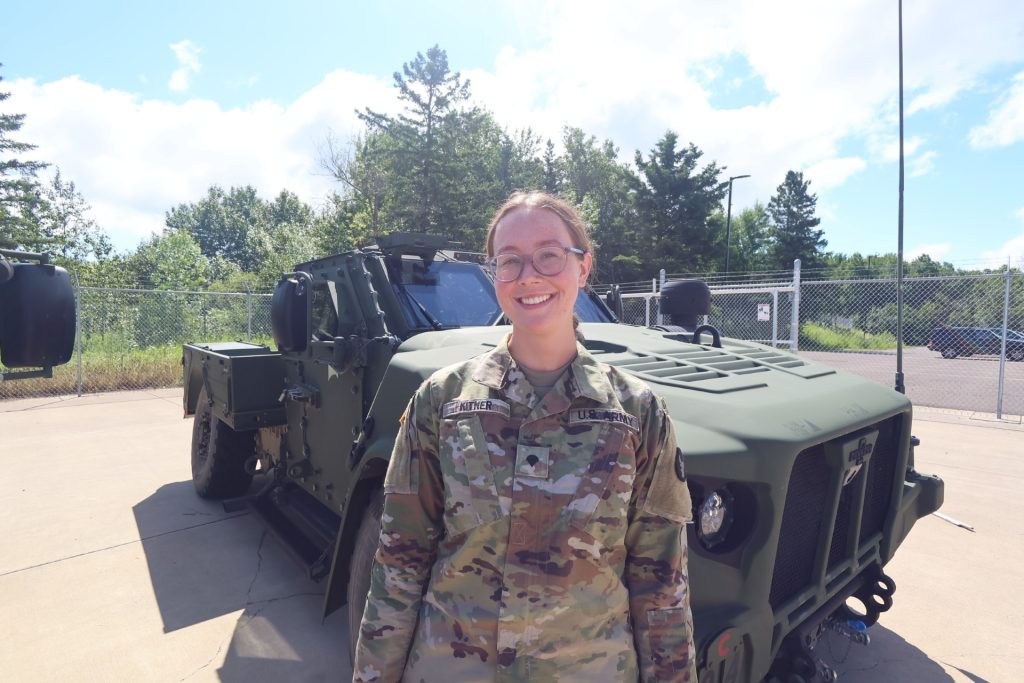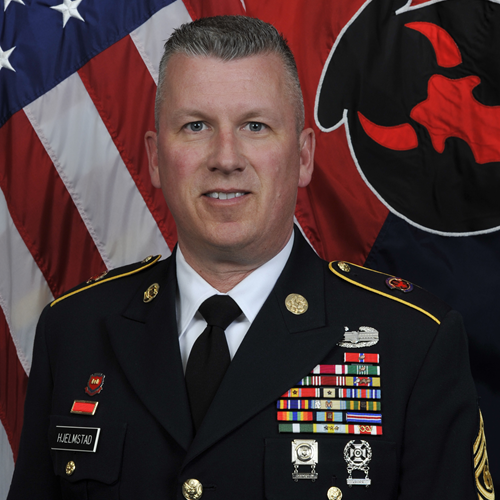New program guides military medics into medical school
A new one-of-a-kind program at the University of Minnesota Medical School is providing military medics with an opportunity designed to take their military experience and catapult it into a career as a physician. For medics such as New Prague native Army Spc. Lauren Kitner of the Minnesota National Guard, one of the first to use the program, it has been a way to jumpstart a career that may not have been otherwise accessible.
The Military Medic to Medical School Program (MM2MS) guides medics with the completion of the prerequisites necessary for acceptance to medical school, provides individualized support, and assists students with preparation for the Medical College Admission Test (MCAT) – the standardized medical admission test required for those applying to medical school.
Open to medics from all military branches, the program was born out of interest from the university, where they sought new pathways for attracting medical school students. One of the faculty members involved with developing this program knows firsthand how valuable military medical experience can be. Retired Air Force Maj. Gen. Dave “Doc” Hamlar is a retired member of the Minnesota National Guard who served 31 years with the Air Force medical community- first as a health service administrator, then as a physician and commander, state air surgeon, and as the assistant adjutant general air for the Minnesota National Guard.
“Medics bring a unique perspective to a program like this,” Hamlar said. “They’ve already decided to be part of something greater than themselves, and they’ve demonstrated they’re willing and able to stay the course when things get hard. Medics have vital experience from military service that will benefit them in the classroom.”
Accepted students are eligible for specialized incentives if they continue to serve as members of the Minnesota National Guard upon becoming doctors. The Guard’s state tuition reimbursement program has a special chapter dedicated to medical students, offering 100% tuition reimbursement at the University of Minnesota’s rate. Additionally, a federal incentive called the Health Professions Scholarship program provides a $2,270 stipend per month to cover living expenses.
“Medicine is much like the military in that it’s not an individual sport,” Hamlar added. “Medical providers depend on their team – nurses, administrators, and therapists – to be successful. Medics are used to that, because they depend on the Soldier or Airman to their left or right. Like the military, this program offers medics the opportunity to be part of something greater to themselves; as medical providers, these individuals would have the opportunity to benefit society for life.”
To date, two medics from Minnesota have been accepted into the program – one of whom is New Prague native Army Spc. Lauren Kitner. “The MM2MS program is truly a program like no other,” Kitner said. “I am honored to be part of a program that not only recognizes but truly values the skills and experiences I have gained as a combat medic. The opportunity to seamlessly transition from military service into medical school, while continuing to serve my community, is both humbling and exhilarating.”
Lauren joined the Minnesota National Guard as a medic when she was 18, during the heart of the COVID-19 pandemic and immediately after graduating from New Prague High School. After undergoing Basic Combat Training at Fort Sill, and Advanced Individual Training at Fort Sam Houston, she began her time as a part-time Soldier with the Headquarters & Headquarters Troop 1-94 Cavalry in Duluth, Minnesota. In addition to her service, she pursued her undergraduate degree at the University of Minnesota in health & wellbeing sciences, while working as a scribe in the emergency room, as well as engaging in research and volunteer opportunities at Hennepin County Medical Center and Masonic Children’s Hospital, respectively.
Medical providers in the Minnesota National Guard are in short supply, and this program offers the opportunity to provide another source of qualified doctors. The program also offers currently serving providers an opportunity to serve as mentors for students going through MM2MS. Individuals interested in this program can reach out to Army Capt. Alexander Rank, specialty branch recruiter, for more information.
Story By 1st Lt. Austin Stibbe
Minnesota National Guard Public Affairs














































































































































































































